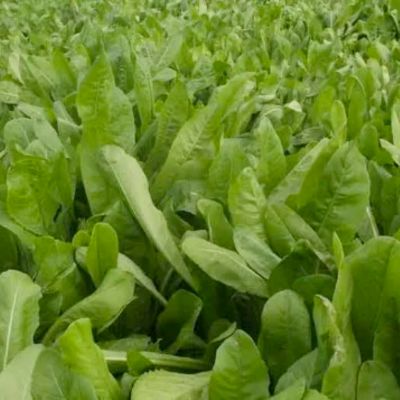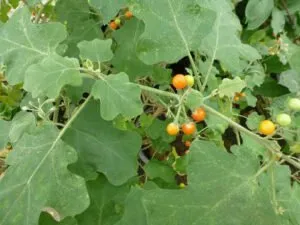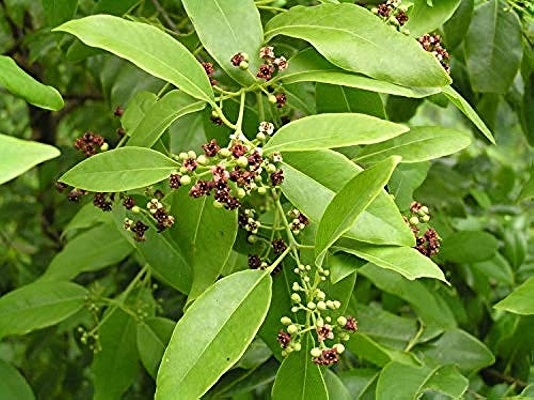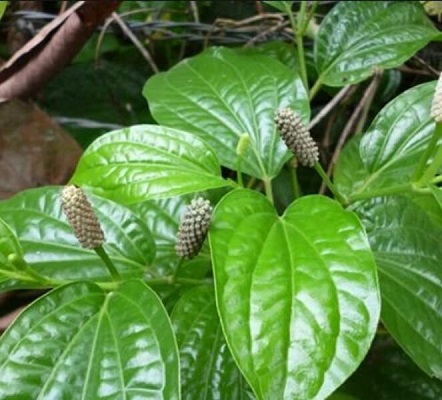On This Page
Bruhati – Solanum Indicum
Introduction
It is commonly known as African egg plant. As the plant has thorn it cannot be touched easily. In Sanskrit it is also known as Varthaki as the plant resembles the small variety of Brinjal. The fruits look like Brinjal but smaller in size and many. It is also known as Bahuputrika as the plant yields plenty of fruits.
Dr.Gupta’s IAFA has been consistently working on Bruhati for discovering more medicinal properties of the plant. Our experts found out that the plant have antiinflammatory, analgesic, antipyretic,antibacterial, antioxidant, anthelmintic, antiplasmodial, hepatoprotective, anticancer, laxative, cardiotonic activity, CNS depressant and anti hypertensive activity. Its fruit contains calcium, phosphorous, iron etc.
Action of Bruhati–Solanum indicum in Allergies
IAFA has been conducting various studies on Bruhati found out the antiallergic and anti-inflammatory actions of the plant. The various chemical constituents present in this plant shows anti-inflammatory activity. Bruhati is very useful in skin diseases by its anti-inflammatory and anti-histamine activity.
Vernacular Names
| Sanskrit Name | Bruhati, Bahuputrika, Varthaki |
| Hindi Name | Vanabhanta, Badikateri |
| English Name | African egg plant |
| Malayalam Name | Putirichunda |
| Kannada Name | Heggulla |
| Telungu Name | Tellamulaka |
Botanical Name
Solanum indicum
Family
Solanaceae
Morphology of Bruhati –Solanum indicum
- Prickly shrub
- Stem – woody , cylindrical
- Roots – numerous secondary branches
- Leaves – large, simple, oval shaped
- Flower – extra axillary racemose cymes
- Fruits – round, berry, orange yellow when ripe
- Seeds – minutely dotted
Ayurveda reference of Bruhati–Solanum indicum

Geographical distribution of Bruhati –Solanum indicum
Bruhati is distributed in warmer parts of India. Usually grows in waste lands and road sides. It also found in Nepal.
Phytoconstituents of Bruhati–Solanum indicum
The plant contains phytoconstituents like saponins, glycoside, sesquiterpenoids, sesquiterpenoids, hydroxycoumarins, phenolic compounds, coumarins, coumarinolignoids alkaloids, saponin, fatty acid, glycerides of the oil, polysachharide, triterpenes etc.
Parts used of Bruhati –Solanum indicum
- Root
- Leaves
Dosage of Bruhati–Solanum indicum
- Root powder – 1-3 gms
- Decoction – 50 – 100 ml
Medicinal Properties of Bruhati –Solanum indicum
- Samgrahi – Absorbent
- Hrdya – Good to heart
- Pachaka – Digestant
- Kushtaghna – Relieves skin diseases
- Jwaraghna – Antipuretic
- Swasaghna – Relieves asthma
- Sulaghna – Relieves pain
- Kasaghna – Alleviates cough
- Sothaghna – Relieves swelling
- Hikka nigraha – Relieves hiccough
- Kantya – Good to throat
- Angamarda prasamana – Relieves body pain

Have A Health Issue?
Consult Online
- Dr. Sahil Gupta (B.A.M.S., M.H.A.)
Ayurvedic Allergy Specialist
CEO & Founder of IAFA®
Home remedies of Bruhati–Solanum indicum
In Ayurveda the treatment of different kinds of diseases are done by naturally availing non toxic drugs. We are continuously working on these plants to find out its pharmacological actions. IAFA have done so many studies on the plant Bruhati and found out that it has wide range of actions. Some of the home remedies are given below.
- Fever (Jvara) – 50 gm of root is taken and added with 200 ml of water, boiled and reduced to 60 ml. This root decoction is taken internally for 3 days.
- Skin diseases (Tvak roga) – Leaves of Bruhati is made into paste and applied externally for 7 days.
- Vomiting (Vamana) – 15 ml of juice of Bruhati leaves are taken internally along with ginger juice.
- Headache (Sirasula) – Paste made with the fruits and applied over forehead and remove after 30 minutes.
- Abdominal pain (Udarasula) – 40 ml of Root decoction is taken internally for 2 days.
- Alopacia ( Indralupta) – Paste made with fruits of Bruhati and honey and applied externally over affected area.
- Cough (Kasa) – 60 ml of Root decoction is taken internally for 5 days.
- Diarrhea in chidren (Atisara) – 10 ml of juice is taken from its fruit and given along with breast milk.
Dr. Gupta’s IAFA provides safe, pure and non toxic Ayurvedic medicines. Our treatment protocols are completely based on Ayurvedic principles. According to Ayurveda each and every plants in the world has its own medicinal properties. Samhitas, Ayurvedic texts explains the properties and actions of almost all the plants. We are mainly focus on alleviating allergic disorders by using naturally available herbs which have less to no side effects. We can assure the safety of our customers as we are subjecting our products to various tests.
Reach IAFA for safe herbal remedies for all your ailments!!!
Was this Page Helpful?
Read More Articles
-

Kasini (Cichorium intybus)
Kasini (Cichorium intybus) commonly known as Chicory is a perennial herb, with large…
-
-









